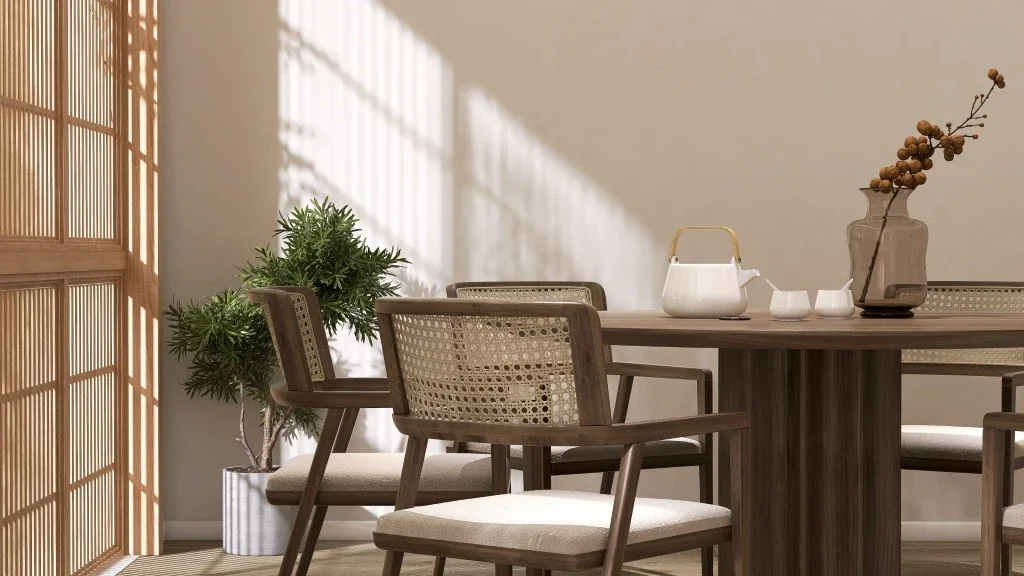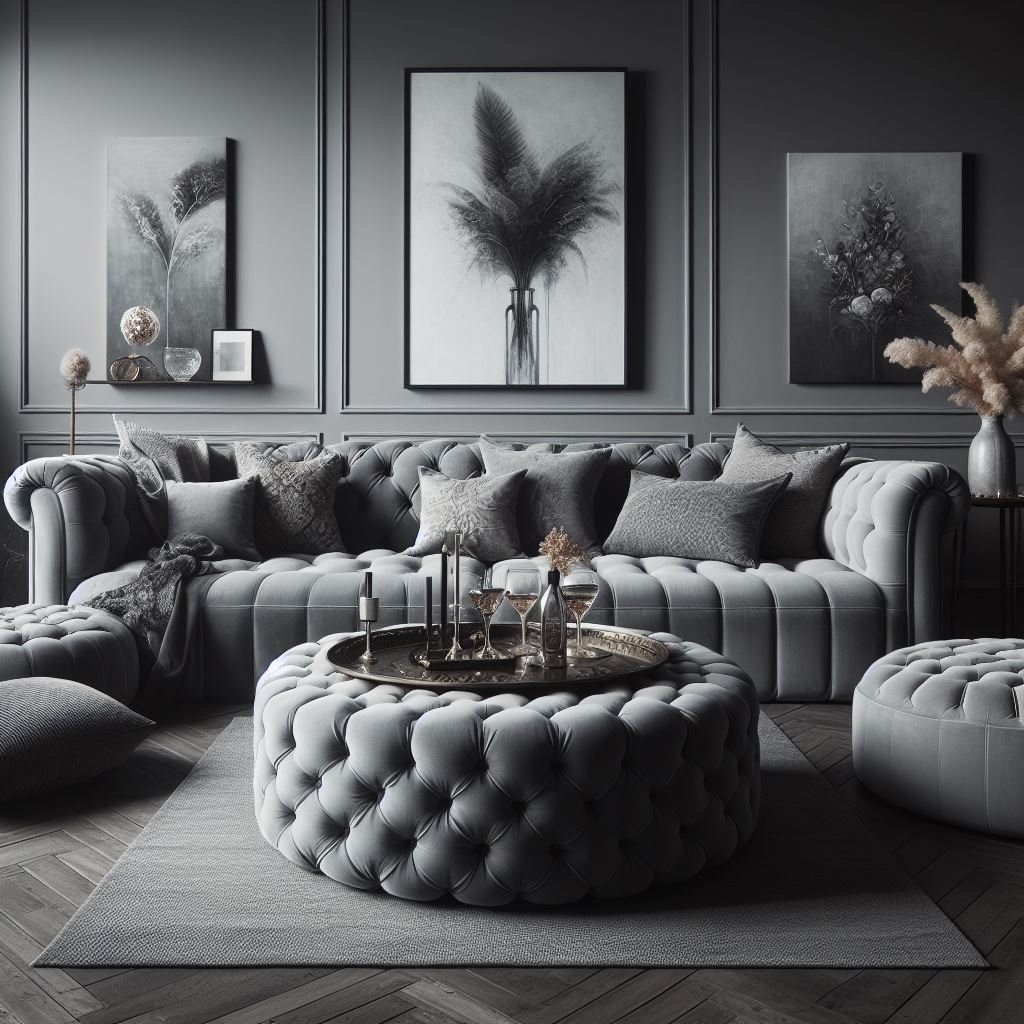Curated Comfort: How to Choose Statement Furniture Pieces That Define Your Space
Discover how to select statement furniture pieces that reflect your style and bring comfort, personality, and balance to your space effortlessly.
A room can be changed with just one well-selected piece of furniture. Whether a sculptural armchair, a dramatic headboard, or a vintage sideboard with a story to tell, statement furniture can ground a room and make a statement about your style at a glance. Statement pieces are meant to be noticed; unlike regular furniture that blends in the background, they are visually appealing, emotionally engaging, and sometimes even conversation-starters.
Many assume statement pieces require designer budgets, but the truth is you can create bold impact without breaking the bank. With Shop Home Styles decor, you can curate standout interior design that elevates your space without overspending.
This guide will help you find, choose, and design statement furniture that is comfortable and has character. Whether you are learning about scale and silhouette or blending materials and layering textures, we will discuss the most critical approaches that can guide you to create a home that feels purposeful and welcoming.
I. Psychology of Statement Furniture
A real statement piece does not scream; it echoes. Visual weight, proportion, and personality make a piece stand out, whether it is a sculptural armchair or a cabinet with a rich grain. All these elements attract attention and anchor the space without dominating it. Even neutral rooms can be made interesting with bold materials such as velvet or brass to create contrast and depth.
However, the impact is more than beauty. The finest statement furniture narrates a story. It speaks of who you are and encourages discussion without sacrificing comfort. When appropriately selected, it provides a long-term visual and emotional benefit at the centre of your house.
II. Identifying Your Space's Personality
Assessing Your Room's Natural Character
Each room has its own rhythm, which is determined by architecture, light, and layout. Sculptural furniture works best in rooms with high ceilings, exposed beams, or arched windows. On the contrary, small rooms with low ceilings can be enhanced by low-profile, sleek furniture that does not make the room look closed. Notice how natural light travels throughout the room: sunlit rooms can accommodate darker or more substantial materials, whereas darker rooms might require lighter colours and reflective surfaces to feel balanced. The colours you already have in your palette make a difference, too. Warm neutrals can be used with earthy textures, and cooler tones can be combined with shiny metals or glass.
Determining Your Personal Style Direction
Your furniture must represent the room and you. A contemporary minimalist would be drawn to straight lines and neutral colours. In contrast, a maximalist would be drawn to significant patterns and textures. Classic beauty is inclined to symmetry, carved wood, and classic shapes, and a modern twist is inclined to asymmetry, mixed materials, and surprising shapes. And if you like more than one style, go with its eclectic design and love contrast. The trick is unity: repeat colours, echo shapes, and balance visual weight to make a space feel curated, not chaotic.
III. Scale and Strategic Placement Considerations
A statement piece must draw attention without dominating the rest of the environment. Identify the room's natural focal point—the fireplace, window, or the piece itself—and place furniture to reinforce it. Items should have at least 30-36 inches of circulation space between them to allow easy movement and prevent visual clutter. Make sure the piece is visible and valued at different points of entry.
Measurements are everything—place painter's tape on the floor and mark the size of the mark before purchasing to determine fit and effect. To prevent unbalanced arrangements, balance heavier items with lighter ones throughout the room. To finish the appearance, include complementary furniture that does not compete with the hero. Employ the negative space to emphasize your statement piece and introduce clarity into the design.
IV. Strategies of Material and Colour Selection
Attention-Getting Material Choices
Statement furniture needs to achieve equal levels of beauty and comfort. Wood showcases its unique grain patterns and tactile textures to produce an authentic complexity and subtlety. From reclaimed oak to walnut's clean sophistication, wood brings natural warmth and character to any space. Softer materials combine with brushed brass, matte black, and antique bronze metal finishes to provide opposing components that define a sophisticated look. Velvet, bouclé, or linen furniture projects luxury and sensuality while stimulating touch, transforming rooms into tactile experiences beyond aesthetic appeal.
Psychology of Colour in Statement Selection
Colour will shift mood and perception. Dark colours such as emerald, ochre, or navy will electrify an area, mainly used on a single, well-positioned piece. Neutral colours—stone, sand, or charcoal—gain emphasis through texture and outline. Patterns, introduced sparingly, provide visual interest. Simple shapes can become the focal point through painterly textile or geometric design. The aim is harmony; every colour and material must be deliberate and reflect you, while also adding to the mood of the space.
V. Affordable Statement Piece Buying Tactics for Significant Impact
Buy items you will engage with daily, which will hold the test of time, like a couch, dining table, or bed. These are worth spending on if they are well-made and classic. Retailers like Shop Home Styles provide quality and value-driven curated collections to help make wise investments. Pay attention to signs of quality, such as frames made of solid wood, reinforced joints, quality upholstery, etc.
Alternative Sourcing for Unique Finds
Unique vintage markets and antique fairs may also be goldmines for characterized, unique pieces. Look for craftsmanship: dovetail joints, solid materials, and a patina with a story. Ordering custom work from a local artisan can also be surprisingly inexpensive, especially for small items. And never underestimate the impact of D.I.Y.: paint it, change the hardware, reupholster it; a diamond in the rough.
Timing Your Statement Purchases
Shop smart by correlating buys to off-season sales—January and July are excellent months to buy for sale. End-of-line designer collaboration items often offer top-line design at bargain prices. Sample sales and showroom clearance are also excellent opportunities to acquire premium items at a fraction of their cost.
VI. Long-Term Curation and Evolution
Constructing Around Your Statement Piece
After you have selected your hero piece, allow it to inform the rest of the room. Slowly add complementary furniture, accessories, and lighting that reinforce its existence. A sculptural accent chair pairs beautifully with simple side tables; a dramatic sofa may require plain carpets and dim lights to tone it down.
Adapting to Lifestyle Changes
Good design is dynamic. You can change your room with new paintings, blankets, or pillows once every season. Rearranging existing furniture can instantly refresh a room. Pick classic and adaptable items to grow with your demands and interests. Future-proofing your room is about choosing quality, not style, and your instincts, not fleeting fads.
Conclusion
Selecting statement furniture involves more than visual impact; creating a space that feels intimate and purpose-built while standing the test of time. Mastering scale, material, colour, and location selection allows you to choose elements that enhance your home while avoiding excess.
Authentic statement pieces serve as mirrors to your identity. Rely on your vision and place investments strategically while embracing the freedom to deliberate without haste. Select a single artwork that resonates with you to define your space's narrative.
Start with one statement piece that speaks to you—whether it's a bold velvet sofa or a reclaimed wood dining table—then build your room around it. Your home should reflect your story, not a magazine spread. Because, in the end, curated comfort isn't perfection—it's personality.






